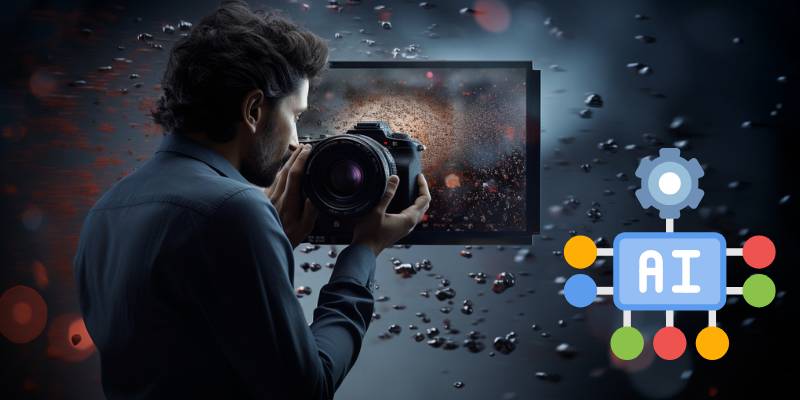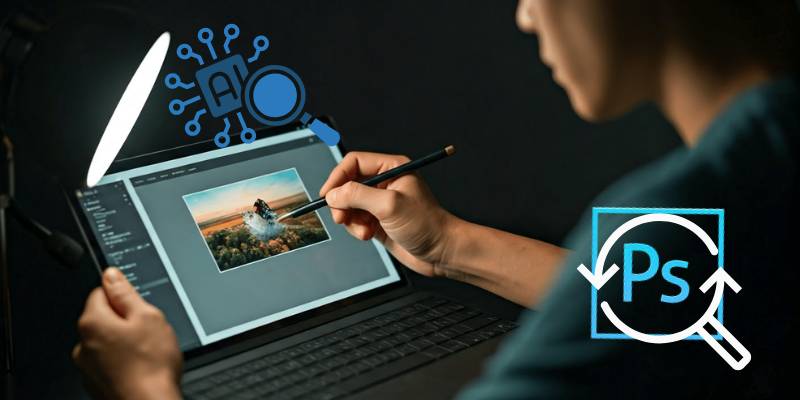I remember the first time I watched an AI tool retouch a portrait in front of me. It removed blemishes, smoothed skin, adjusted lighting, and even reshaped a jawline—all in less than thirty seconds.
It was jaw-dropping and unsettling at the same time. A part of me thought, “Wow, that’s the future.” Another part whispered, “But wait—what does this mean for authenticity?”
That’s the crux of the debate right now. Photographers everywhere are wrestling with the promise and the pitfalls of AI retouching.
Some see it as liberation from repetitive, time-consuming edits. Others see it as a slippery slope that threatens artistry, ethics, and even self-image.
So, why are photographers so split? Let’s unpack this together.
The Rise of AI Retouching
AI in photo editing isn’t new, but its sophistication has exploded in just a few years. What used to take hours in Photoshop—dodging, burning, cloning—can now be achieved in seconds.
Today’s AI-powered insights go beyond simple filters. They analyze facial symmetry, lighting dynamics, and even cultural beauty standards to “improve” an image.
Tools like Adobe Firefly, Luminar Neo, and Retouch4me can automatically smooth skin, brighten eyes, whiten teeth, and balance tones with a single click.
According to a 2024 report by Statista, 68% of professional photographers now use AI-based editing tools in some capacity, up from 42% just two years earlier (Statista). That’s an extraordinary leap, and it shows the level of demand.
But numbers don’t capture the emotional divide. Let’s get into the why.
Why Some Photographers Embrace AI
If you’ve ever edited wedding photos, you know it’s not glamorous. Hundreds, sometimes thousands, of images. Skin tones to correct. Distracting shadows to fix.
Retouching pimples on every other frame. It’s exhausting, and it eats into time that could be spent shooting or marketing your work.
For many, AI is a relief.
- Efficiency: Batch editing saves hours, sometimes days.
- Accessibility: Photographers who aren’t Photoshop experts can still deliver polished results.
- Consistency: AI ensures uniform edits across large photo sets.
One commercial photographer I spoke with put it bluntly: “I don’t get paid to sit in front of a screen cloning out dust spots. I get paid to capture the shot. AI just gives me back my life.”
From this perspective, AI isn’t a threat—it’s a partner.
Why Others Resist
On the flip side, there’s a vocal group of photographers who see AI retouching as dangerous. Their concerns aren’t just technical; they’re deeply personal and philosophical.
- Authenticity: If AI alters reality too much, is the photo still truthful?
- Over-smoothing: Many tools create plastic-looking skin, erasing humanity in pursuit of flawlessness.
- Artistic integrity: Some feel outsourcing retouching to AI undermines the craft.
This group often argues that flaws—wrinkles, scars, imperfections—are part of what makes a portrait meaningful. One documentary photographer told me, “AI takes away the soul. It sanitizes people into mannequins.”
Here’s the heart of it: photographers are divided because their values differ. Efficiency versus authenticity. Perfection versus humanity.
Realism Insights vs. Idealization
At the center of this debate is the battle between realism insights and idealized beauty.
AI tools often default to a narrow definition of attractiveness—clear skin, big eyes, symmetrical features. But real life isn’t symmetrical, and real faces tell stories through imperfections.
When AI “corrects” those imperfections, it’s not neutral. It reflects biases baked into training data and societal standards. According to research published in Nature Machine Intelligence in 2023, AI photo models often amplify Eurocentric beauty ideals, smoothing out cultural features in problematic ways.
For clients, this can feel confusing. Do they want to see themselves as they are, or as AI thinks they should be?
The Business Beauty: AI View
We also need to acknowledge the business side. Retouching is a service, and clients often expect images to look “better” than reality.
This is where the business beauty: ai view comes in. For commercial work—ads, fashion spreads, product shoots—AI retouching delivers what the market demands. Flawless skin sells. Perfect lighting sells. Time efficiency saves costs.
From a business perspective, resisting AI could even become a liability. If your competitors deliver polished results faster and cheaper, where does that leave you?
This is why many studios are quietly adopting AI while still branding themselves around “authentic photography.” The economics are hard to ignore.
Ethics Guide for AI Retouching
Of course, once you start editing people’s faces with AI, you’re in ethically tricky territory. That’s why an ethics guide is essential.
Some key principles being discussed in the industry include:
- Transparency: Should photographers disclose when AI was used in retouching?
- Consent: Do subjects get a say in how much retouching is applied to their images?
- Boundaries: Is it ethical to alter body shapes or facial features beyond temporary blemishes?
- Context: In journalism, any AI alteration is unacceptable. In fashion, it’s almost expected.
The American Society of Media Photographers (ASMP) has already begun drafting recommendations on AI disclosure. The industry isn’t unified yet, but the conversation is gaining momentum.
Psychological Impact on Clients
We can’t ignore the human side here. Studies have long shown that heavily retouched images contribute to body image issues, especially among young people. Add AI into the mix, and the pressure only intensifies.
A 2022 Dove Self-Esteem Project study found that 80% of girls had already used filters or editing apps by the age of 13 (Dove). When AI makes retouching effortless and nearly invisible, the line between “normal” and “edited” blurs further.
Clients who see AI-perfect versions of themselves may start comparing reality unfavorably. That’s a heavy responsibility for photographers.
The Role of Regulation
Governments are starting to pay attention. France already requires labels on ads that digitally alter body shapes. The EU’s proposed AI Act includes provisions on transparency for generative content.
Will AI retouching soon require disclosure by law? It’s possible. And if so, photographers who build ethical practices now may be ahead of the curve later.
AI-Powered Insights into the Future
Where’s this all heading? Based on current ai-powered insights, a few predictions stand out:
- Customization: Future tools will allow photographers to fine-tune retouching to each client’s preferences, rather than applying generic standards.
- Cultural Sensitivity: AI will (hopefully) get better at respecting diverse features and avoiding harmful biases.
- Hybrid Editing: Many pros will use AI for the heavy lifting, then add human finesse for emotional depth.
- Watermarking: Some tools may automatically embed metadata indicating AI involvement.
I suspect that in ten years, AI retouching will be so common that debating its existence will feel quaint. The real question will be about boundaries, not capability.
My Personal Take
If you asked me where I stand, I’d say I live in the middle ground. I don’t think AI retouching is inherently evil. It’s a tool—one that can save time, reduce drudgery, and even expand creative possibilities.
But I also worry about its power to homogenize beauty, erase individuality, and push impossible standards. I’ve seen portraits where the subject looked more like a doll than a person, and it left me cold.
For me, the answer lies in intentionality. Use AI when it enhances the story you’re trying to tell. Avoid it when it risks erasing the humanity of your subject. And above all, be transparent—with clients, with audiences, with yourself.
Conclusion: A Divided Future
Photographers are divided over AI retouching tools because the technology cuts straight to the heart of their values. For some, it’s freedom. For others, it’s betrayal.
The truth is, both sides are right. AI retouching is powerful and problematic. It liberates and it distorts. It can elevate photography or undermine it. Which outcome wins depends not on the tools themselves, but on how we choose to use them.
So maybe the question isn’t “Should photographers use AI retouching?” but “How do we use it responsibly?” That’s a harder, more human question—and one worth asking again and again as the technology evolves.


